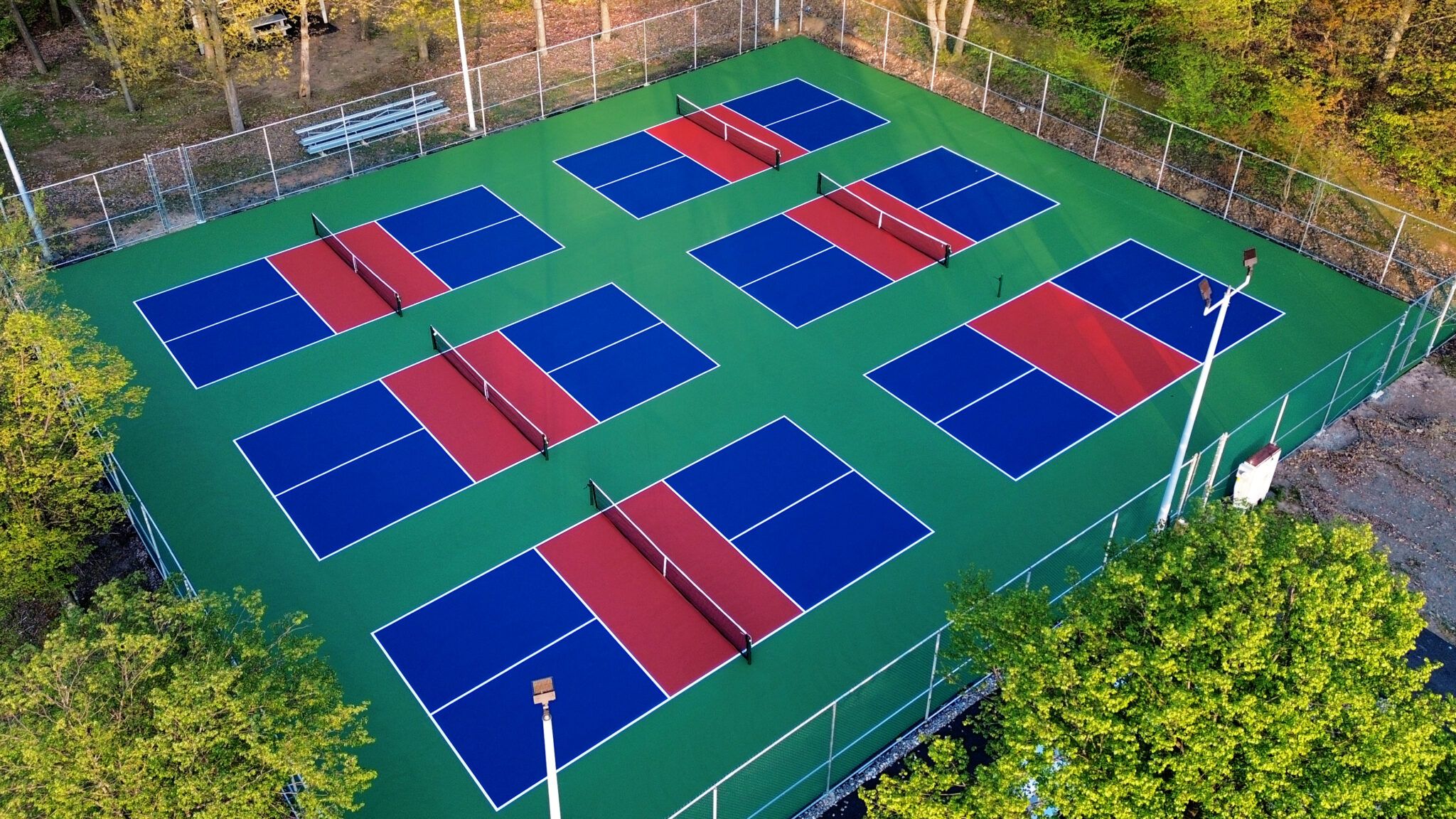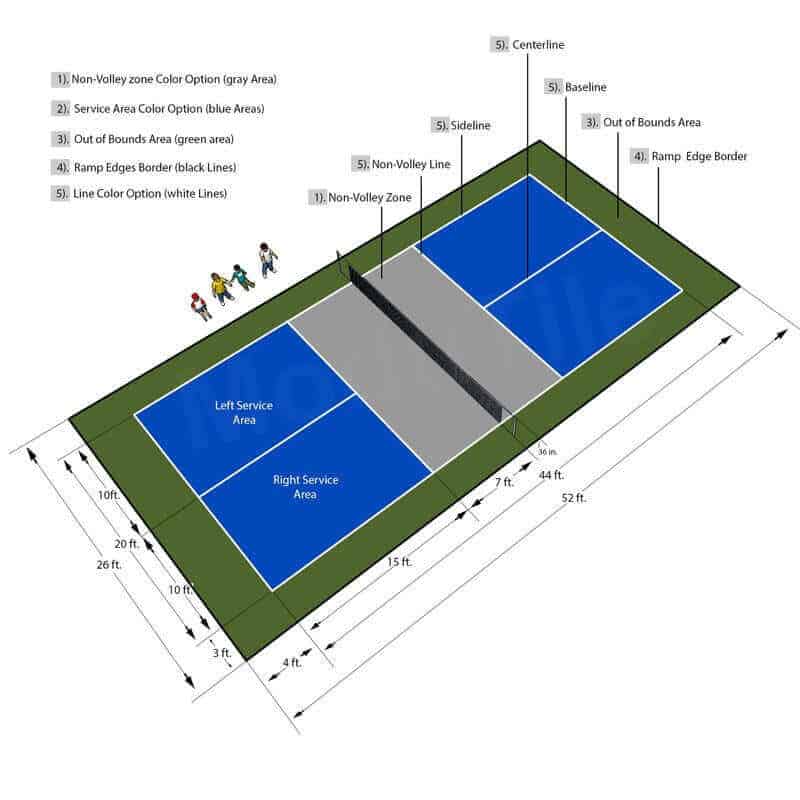Sustainable Practices in Pickleball Court Building You Need To Know
As the appeal of pickleball proceeds to climb, so too does the need for lasting practices in court building. This strategy not just addresses ecological issues yet likewise enhances the durability and capability of the courts. From picking eco-friendly materials to executing reliable drainage and energy-saving illumination options, there are numerous methods to consider. Yet, the effect of these methods extends far past the court itself. Understanding just how each element adds to a much more lasting future welcomes additionally exploration right into the complex equilibrium in between entertainment growth and environmental stewardship.
Selecting Eco-Friendly Products
Selecting eco-friendly products is a crucial step in the building of lasting pickleball courts. The choice of lasting materials not only decreases environmental impact however likewise boosts the longevity and performance of the court. Trick materials include reused rubber for the surface, which provides superb longevity and shock absorption while drawing away waste from land fills.
Additionally, making use of in your area sourced materials lowers transportation exhausts and sustains regional economies. Pickleball court construction. For instance, making use of indigenous hardwoods for fence and seats can offer a sustainable visual while making certain strength against the aspects.
Incorporating permeable products for court foundations can better add to sustainability by allowing for all-natural water drain and lowering drainage. These options not only secure neighborhood ecological communities however also advertise much healthier play atmospheres.
Efficient Drain Solutions
While the choice of environmentally friendly products is important, applying reliable drainage options is just as vital for keeping sustainable pickleball courts. Appropriate water drainage not just protects the court surface from water damage but likewise reduces erosion and drainage, promoting environmental honesty.
Effective drain systems can consist of permeable paving, which allows water to penetrate the ground rather than pooling on the surface. This decreases the probability of standing water, which can cause mold and mildew and various other maintenance problems. In addition, including purposefully positioned water drainage networks and swales can route excess water away from the court area, making certain a dry having fun surface and avoiding dirt erosion.
Utilizing indigenous plant life in the landscape design around the courts can further enhance water drainage by absorbing excess water and decreasing overflow. These plants need less irrigation and promote biodiversity, straightening with sustainable techniques.
In addition, it is essential to routinely keep the drain system to guarantee its long-term efficiency. This includes clearing up particles and monitoring for obstructions. By prioritizing effective drainage services, pickleball court fitters can considerably add to the sustainability and durability of the facility, eventually benefiting both players and the atmosphere.
Energy-Efficient Lighting Options
As the need for pickleball remains to grow, integrating energy-efficient lights alternatives into court design has come to be significantly crucial for sustainability. Standard lighting systems often take in too much energy, adding to greater operational prices and ecological effect. Therefore, taking on modern, energy-efficient technologies is important for both brand-new buildings and improvements.
LED (Light Emitting Diode) lighting stands apart as a premier choice due to its long life and energy savings (Pickleball court construction). Contrasted to standard illumination, LEDs make use of roughly 75% much less power and can last approximately 25 times longer, dramatically reducing maintenance prices. In addition, the directional nature of LED lights reduces light contamination, making sure that illumination is focused on the court instead of bordering locations.

Lasting Surface Area Alternatives
Discovering lasting surface alternatives see this page for pickleball courts has acquired traction amongst players and builders alike. The focus on eco-friendly materials not just lines up with the expanding ecological understanding yet likewise enhances the performance and durability of the courts.
One preferred choice is making use of recycled rubber, which can be sourced from used tires. This product offers excellent shock absorption, minimizing the risk of injuries for gamers while promoting sustainability. Additionally, modular ceramic tiles made from recycled plastics supply an additional feasible alternative. These ceramic tiles are simple to change and mount, and their convenience enables numerous court Go Here arrangements.
All-natural turf courts are additionally becoming a sustainable choice, advertising biodiversity and decreasing the warmth island result. They require regular maintenance and water, which might not line up with all sustainability goals.

Water Preservation Techniques

One more efficient method entails the installment of rainwater harvesting systems. These systems accumulate and save rain for use in maintaining court surfaces and landscape design. This technique not only saves potable water however likewise decreases reliance on local resources.
Moreover, using drought-resistant landscape design around the courts is necessary. Native plants call for much less water and are much better adapted to neighborhood climate conditions, thus reducing total water usage. Furthermore, making use of reliable watering systems, such as drip watering, ensures that water is delivered straight to plant roots, decreasing dissipation and waste.
Conclusion
Integrating lasting practices in pickleball court building and construction substantially contributes to ecological preservation and resource effectiveness. By focusing on these practices, the building of pickleball courts can line up with more comprehensive ecological objectives while promoting longevity and performance within neighborhoods.
As the appeal of pickleball proceeds to climb, so also does the demand for lasting techniques news in court construction.Choosing eco-friendly materials is a crucial action in the building and construction of lasting pickleball courts. By focusing on energy-efficient lights alternatives, pickleball court builders can contribute to a much more sustainable future while meeting the needs of stakeholders and players alike.Incorporating sustainable surface choices not just boosts the efficiency of pickleball courts yet likewise paves the way for implementing reliable water conservation techniques.Including sustainable practices in pickleball court building and construction dramatically contributes to ecological preservation and source effectiveness.
Comments on “High-Quality Pickleball Court Construction for every single Level of Play”